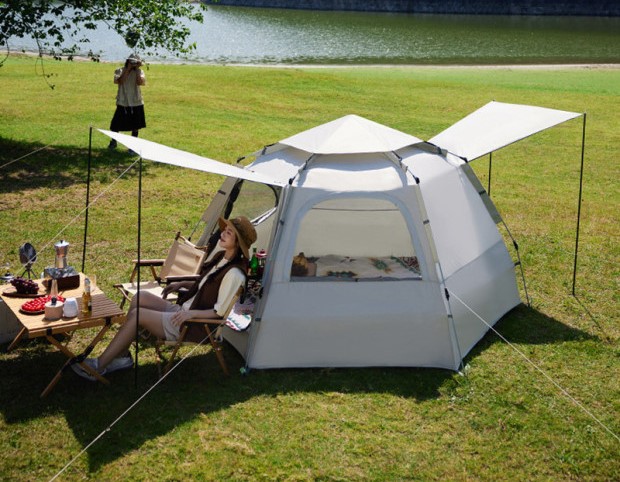News Center+ 查看更多
Choosing the Right Tent: A Guide for Beginner Campers+ 查看更多
Time-intensive tent setups can drain one's energy and detract from the essence of camping, which is to relax and connect with nature. Each tent type comes with its unique assembly method, and it's imperative to be well-informed before making a purchase. A tent may appear appealing in design, but if the setup process is complex, it can lead to regret and frustration. Understanding the tent's structure and practicing the setup beforehand can save valuable time and energy during actual camping excursions.
The Popularity of Dome Tents
Dome tents have emerged as a mainstream choice for their relative ease of setup. They usually employ 2 to 6 poles that crisscross in an X-formation, either threading through hooks or sleeves, allowing the structure to stand independently. Securing the tent with guy ropes and stakes then solidifies this outdoor shelter. Such tents are user-friendly, particularly appealing to those who are new to the camping scene. However, even with these simpler models, practice sessions prior to the trip are advisable to ensure a smooth real-world assembly.
For those seeking to minimize their setup time, the automatic pole pop-up tent provides a solution. These tents epitomize convenience and can be assembled with minimal effort – often just a push and a pull are required to erect a temporary outdoor haven. This feature makes them a popular choice among those who prioritize ease and speed over other tent features. However, it's important to note that while they offer quick setup, they might not always withstand harsh weather conditions as sturdily as their traditional counterparts.

The Flipside of Convenience
While instant tents offer a reprieve from the complex setup, they do come with drawbacks. The quick assembly often means a compromise in durability and stability. In challenging weather, such as strong winds or heavy rainfall, these tents may not provide the same level of protection as more traditional tents. Additionally, their simplistic design might lack some of the comforts and features that more involved tents offer, such as vestibules for gear storage or varied ventilation options.
Another consideration is the packing size and weight. Automatic tents tend to be bulkier when packed, making them less ideal for backpacking trips where weight and space are at a premium. The internal mechanisms that allow for the quick setup also add to the overall weight, a factor to consider if one plans to carry the tent over long distances. Therefore, it's important to weigh the convenience of setup against these factors when choosing the ideal tent for your camping adventure.
Final Thoughts on Tent Selection
The key to a successful camping trip lies in the harmony of convenience, comfort, and durability of your shelter. Novice campers must balance the allure of easy tent setups with the practicality of their camping needs and conditions. Whether it's the traditional X-pole dome tent or the modern pop-up design, ample practice and familiarity with the setup process will ensure that the camping experience remains enjoyable rather than burdensome. Remember, the ultimate goal is to immerse in the tranquility of nature, and the right tent is your first step in that journey.

